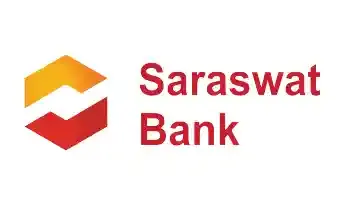Get instant loan offer suitable to your profile !


On this Page:
Find out how much loan amount you can get on an education loan. Understand factors affecting loan amounts, eligibility criteria, and tips to maximize your education loans.
Unlocking the money for your overseas education trip poses an important question: "How much student loan can I get for study abroad?" This blog guides handling college loans, including the factors that influence loan amounts and distinguishing between secured and unsecured loans.
After reading this blog, you will know, “How much student loan will I get from different lenders?” So, take your first step toward financially safeguarding your ambition of studying abroad, provided you have the required insights to support your future.

Before we get into how much loan can I get for studying abroad, it's necessary to understand the different forms of school loans. When considering an education abroad, students frequently consider education loans for abroad as their primary source of funding. Understanding the differences between secured and unsecured school loans is critical for making an informed decision that suits one's financial situation.
Borrowers who take out secured education loans must pledge an asset as collateral, such as real estate, fixed deposits, or other valuables. The inclusion of collateral reduces the risk for lenders, resulting in lower interest rates and better loan terms for borrowers. The loan amount is frequently increased, sometimes paying up to 100% of the educational expenses, depending on the collateral value. However, borrowers face the danger of losing the collateral asset if they fail to repay the loan.
Unsecured education loans involve no collateral from the borrower. These loans are approved based on the borrower's credit score, financial history, and earning prospects. Because these loans pose a larger risk to lenders, they frequently carry higher interest rates and stricter repayment terms. Unsecured loans have the advantage of being accessible to students who do not have large assets to use as collateral but have a solid academic background and potential for future earnings.

Many students question, “What is the maximum student loan amount?” Well, this answer doesn’t have a fixed answer, as this answer might get changed based on the lender you choose. This also has a huge impact on your financial strategy, ensuring you have enough finances to cover all of your abroad education expenses, such as tuition and living expenses. A comparison of the maximum loan amounts offered by different lenders will provide students and their families with the necessary knowledge to efficiently navigate their financial planning for an international education.
| Lender Name | Maximum Loan Amount Secured | Maximum Loan Amount Unsecured |
|---|---|---|
|
Up to 3 Cr INR |
Up to 7.5 Lakh INR |
|
|
Up to 1.5 Cr INR |
Up to 40 Lakh INR |
|
|
Up to 1 Cr INR |
Up to 75 Lakh INR |
|
|
Up to 2 Cr INR |
Up to 1 Cr INR |
|
|
Up to 1 Cr INR |
Up to 75 Lakh INR |
|
|
Up to 1 Cr INR |
Up to 75 Lakh INR |
|
|
Up to 75 Lakh INR |
Up to 75 Lakh INR |
|
|
N/A |
Up to 80 Lakh INR |
|
|
Up to 1 Cr INR |
Up to 50 Lakh INR |
|
|
N/A |
Up to 85 Lakh INR |
|
|
N/A |
Up to 100% cost to study |

Here are the factors that answer your question - how much loan can I get for studying abroad?







Now that you have the answer to how much loan can I get to study abroad? Let's understand the application process for an education loan.
But, if you are still confused with “How much loan can I get as a student?”. GyanDhan simplifies it by guiding you through the whole application process of applying for an education loan to study abroad. Their service is intended to assist students in finding the best loan option based on their specific requirements.




So there you have it - arranging an education loan for your foreign study isn't as difficult as it appears. Everything from loan types to borrowing limits is determined by a few important elements. Curious about "How much student loan can I get for study abroad?" GyanDhan has got your back. Check your loan eligibility with them now and get one step closer to attending your dream institution overseas.

An admission letter can be provided later during the disbursement process. However, many lenders provide conditional pre-approval depending on your academic background, program, and country.
For the US, you can get INR 75 Lakhs from lenders such as Yes Bank, ICICI Bank, and Credila.
Yes, banks and financial institutions have some priority countries where placement and education quality are better. This list includes the United States, the United Kingdom, Canada, Australia, and Germany.
The minimum loan amount for abroad education fixed by the RBI is INR 20 Lakhs, but based on the country, collateral, and co-applicant, the limit can be extended to INR 3 Crores.
Lenders usually offer education loans at floating interest rates; thus, if the RBI or market trends change, the interest rate will also change. However, you can also ask for a fixed interest rate on your loan amount to avoid the changes.
Yes, in some instances, lenders may grant an extension of the payback time. This usually necessitates a written request and justification, such as financial difficulty. Keep in mind that extending the repayment period is likely to result in a higher overall interest expense over the loan's life.
Yes, under Section 80E of India's Income Tax Act, the interest paid on a higher education loan is tax-deductible. This deduction can be claimed for up to eight years, beginning with the year you begin repaying the loan. This benefit applies to loans obtained for higher education for the taxpayer, their spouse, children, or a student for whom the taxpayer is a legal guardian.
Check Your Education Loan Eligibility

Ask from a community of 10K+ peers, alumni and experts
Trending Blogs
Similar Blogs

Network with a community of curious students, just like you
Join our community to make connections, find answers and future roommates.. Join our CommunityCountry-Wise Loans
Best Lenders for Education Loan

ICICI Bank

Axis Bank

Union Bank

Prodigy

Auxilo

Credila

IDFC

InCred

MPower

Avanse

SBI

BOB

Poonawalla

Saraswat